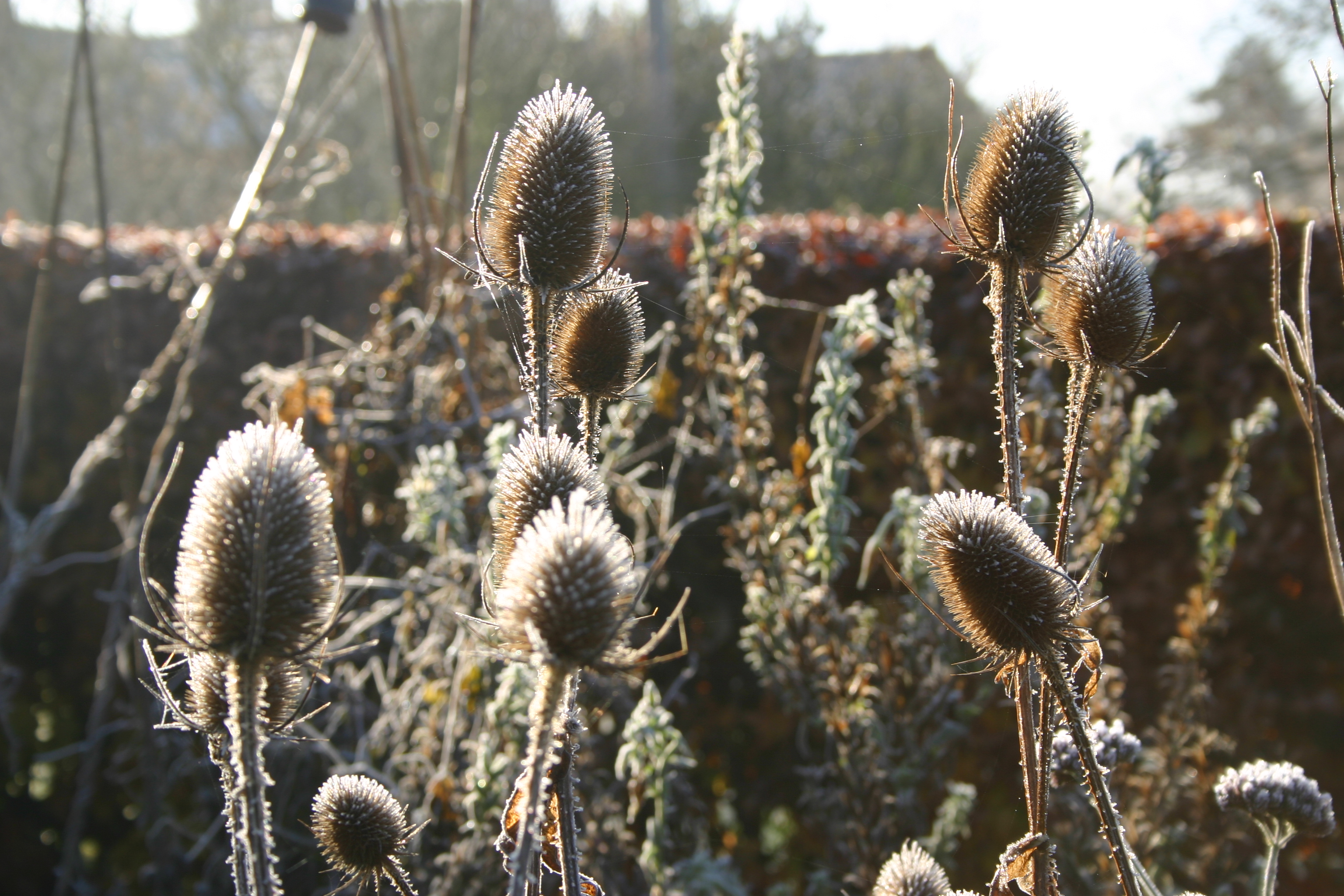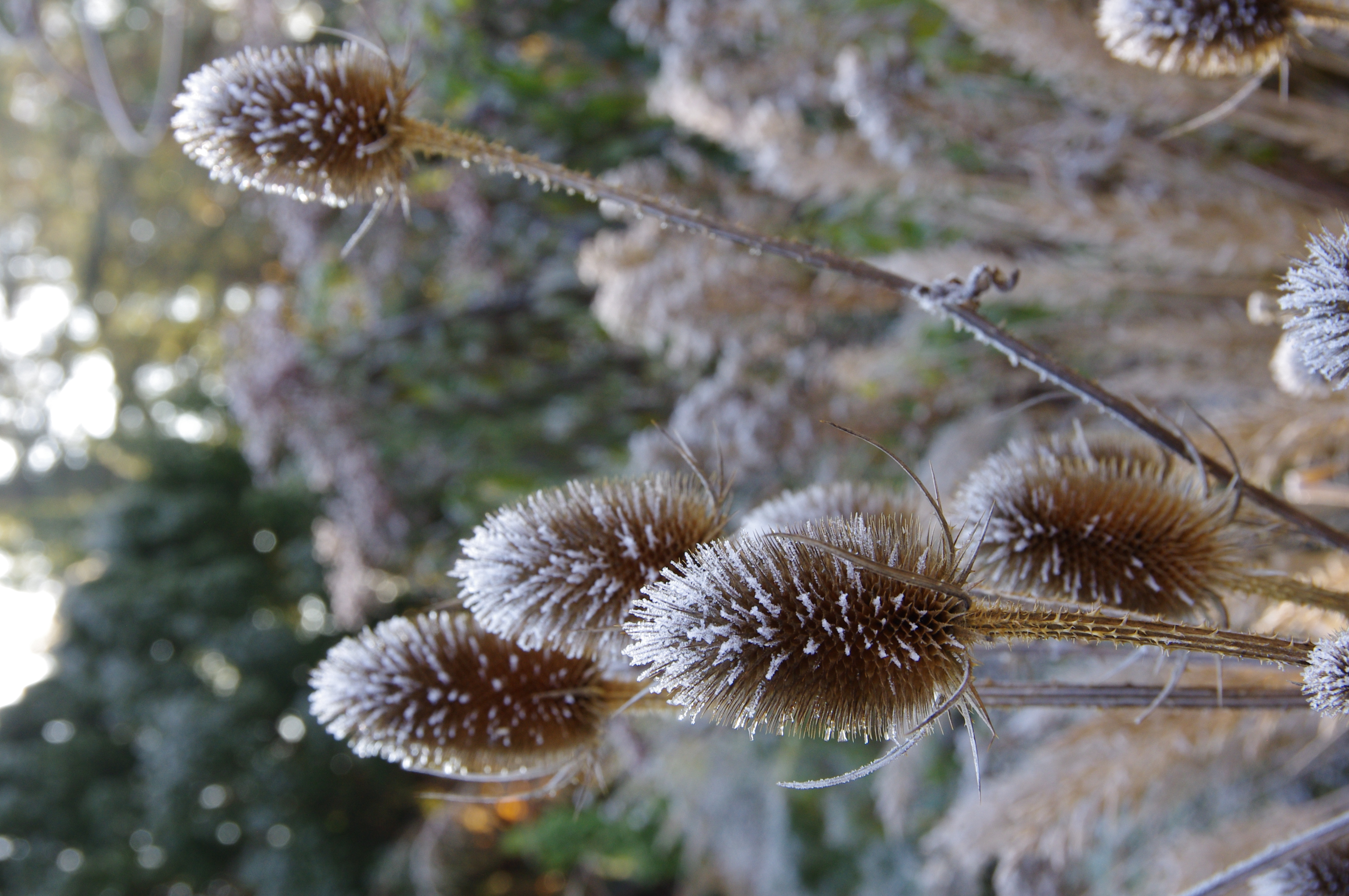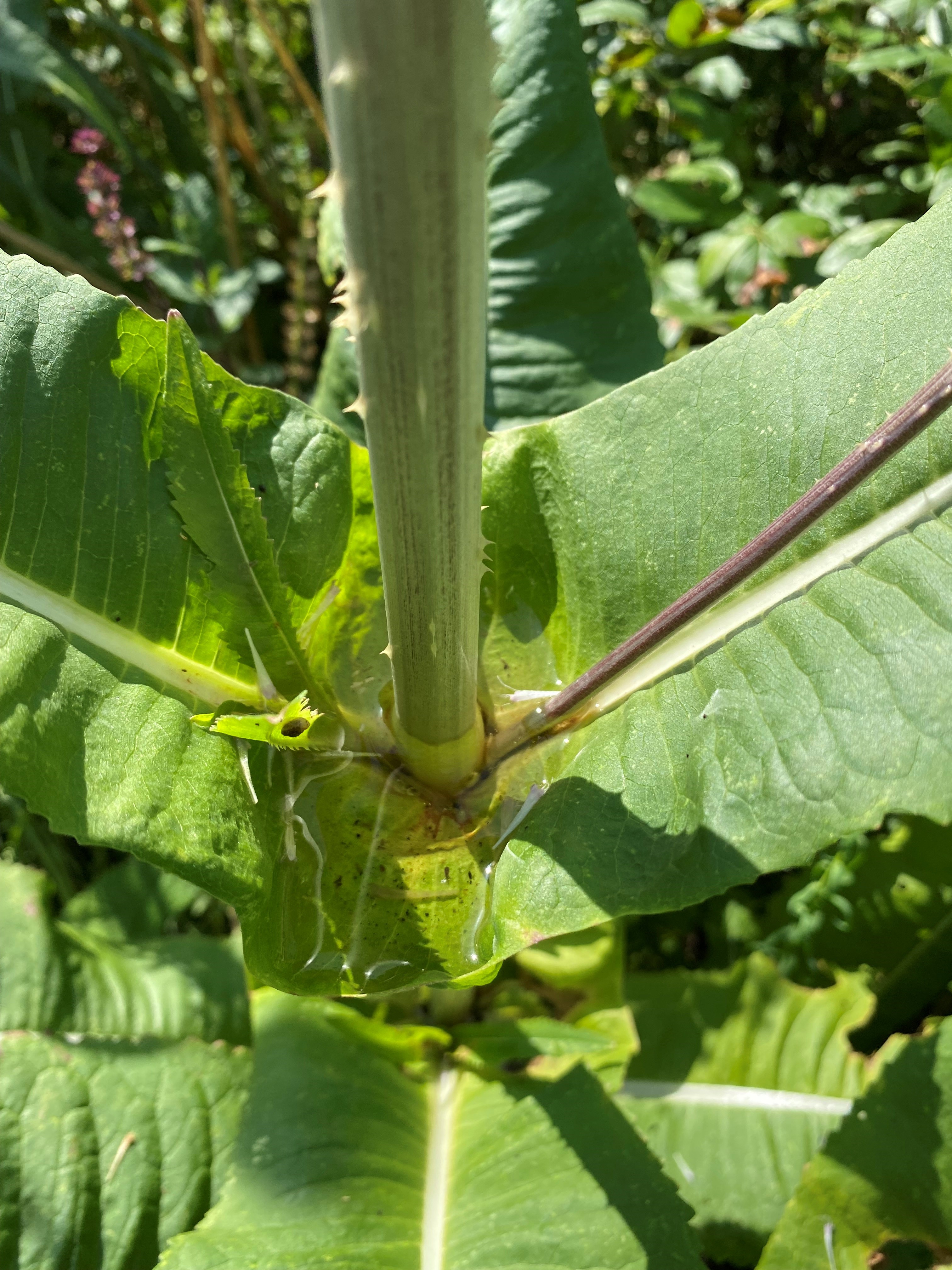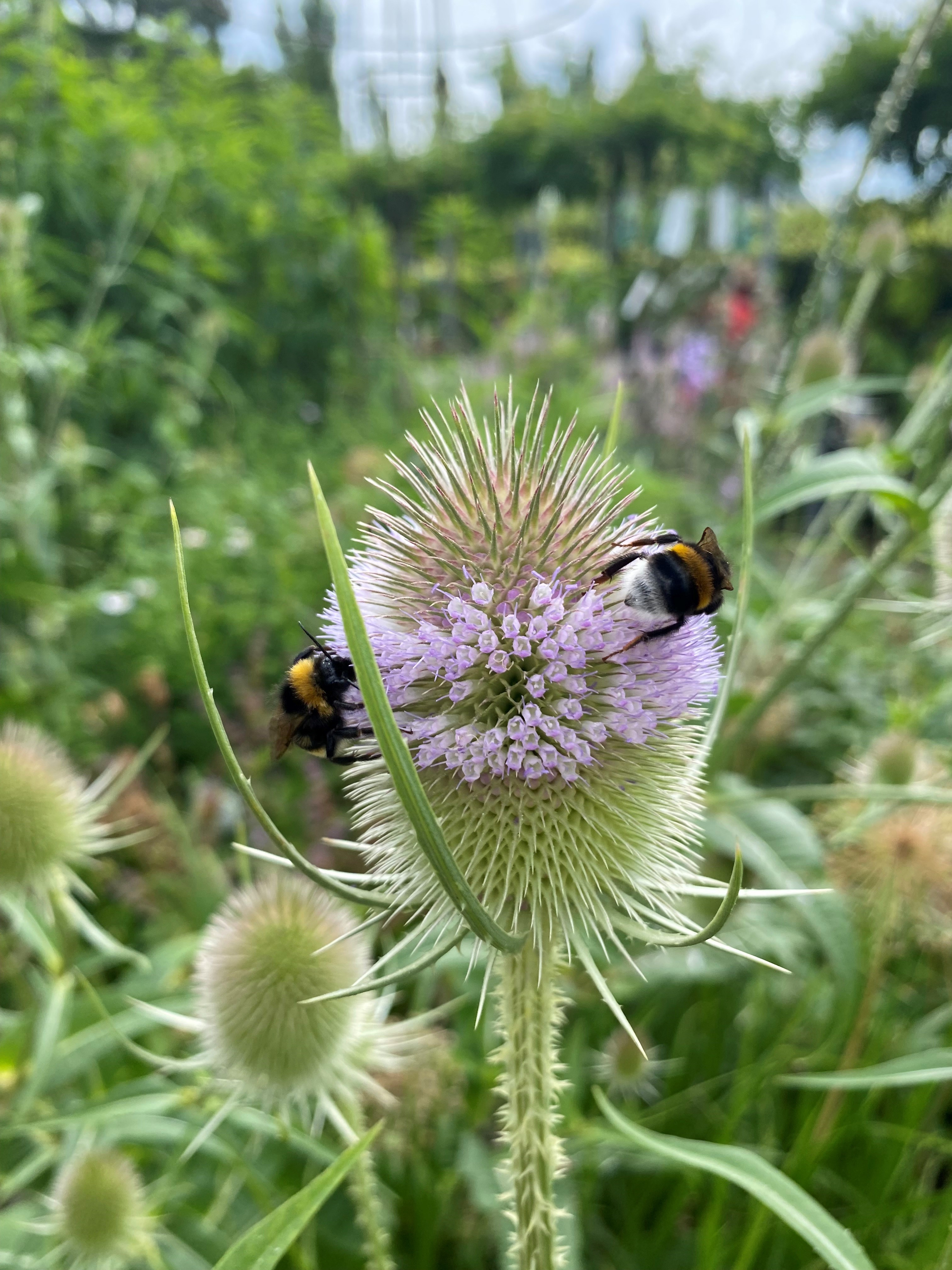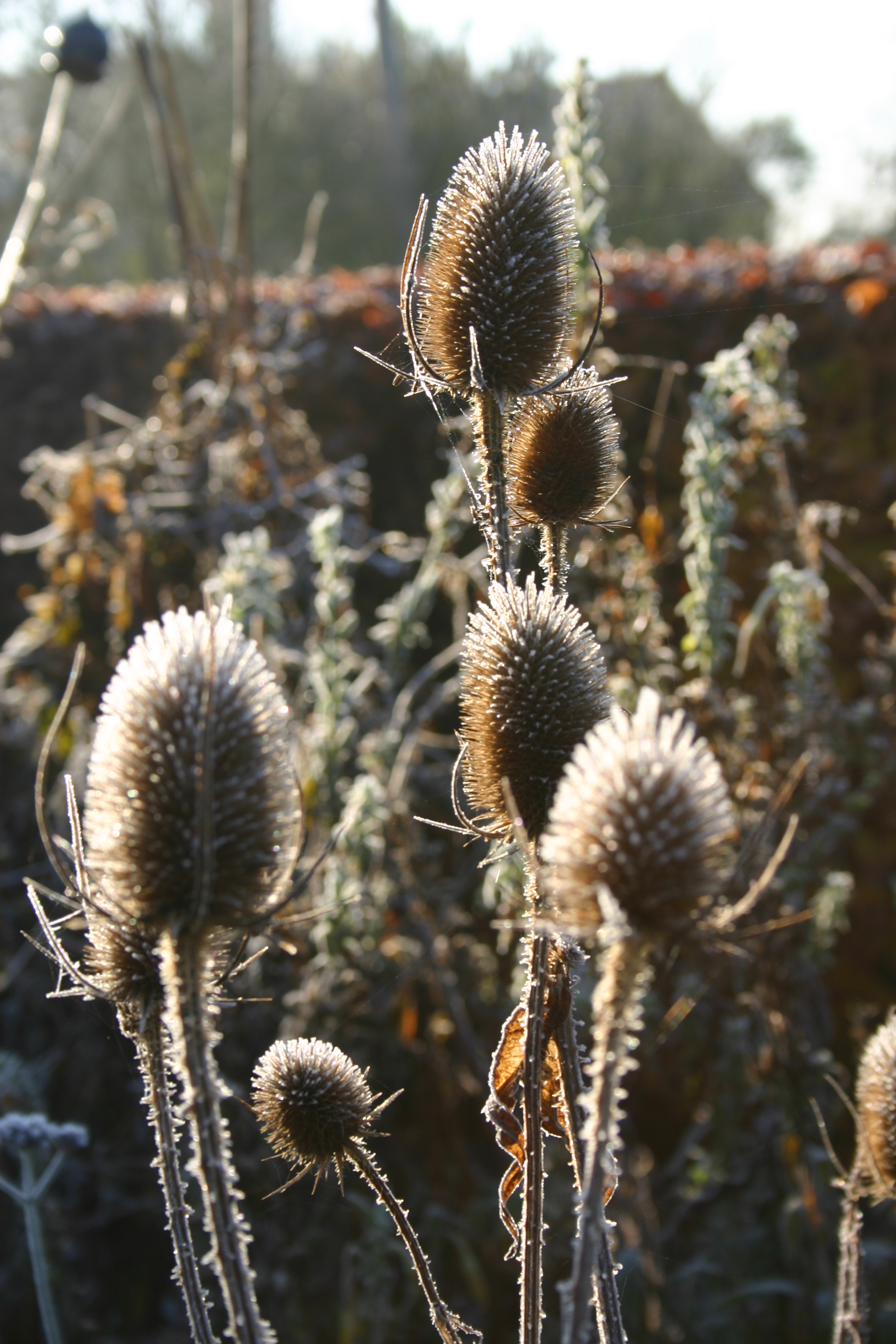Diese stattliche Pflanze wird etwa 2-2,5 Meter hoch und entwickelt im Laufe des Sommers eine stark verzweigte, luftige, aber sehr stabile Struktur, die den gesamten Winter überdauern wird. Den ganzen Sommer über trägt die Pflanze zahlreiche, fast eiförmige Blütenköpfe, von denen jeder mit Hunderten von kleinen lilafarbenen Blüten besetzt ist, die von Bienen sehr geliebt werden. In den Wintermonaten ändert sich ihre Beliebtheit, denn die Samenköpfe werden zur bevorzugten Futterpflanze des Stieglitzes. Diese farbenfrohen Vögel stürzen sich auf das Beet und picken die Samen heraus. Glücklicherweise putzen sie sie nie ganz ab, so dass im Frühjahr in der Nähe der (inzwischen abgestorbenen) Mutterpflanze neue Keimlinge entstehen und für die nächste Generation von Kardepflanzen sorgen.
Die Pflanze gehört zu denjenigen, die einen guten Selbstschutzmechanismus entwickelt haben, denn ihre Stängel und die Unterseiten der Blattrippen sind mit kleinen Stachelige Pieksern bestückt was die Pflanze etwas unfreundlich macht, auch die Blüten sind ziemlich stachelig. Die Blätter dieser Pflanze sind insofern etwas ungewöhnlich, weil sie die Stängel umschließen. Das Regenwasser sammelt sich immer an dieser Stelle und wird von anderen Gartenbewohnern als Trinkstelle sehr geschätzt. Darwin entwickelte die Theorie, dass die Pflanze fleischfressend sein könnte, da einige kleine Insekten in diesen kleinen Pfützen ertrinken, aber bisher hat die Forschung keinen Hinweis darauf gefunden, dass die Pflanze hier Nährstoffe gewinnt.
This stately plant reaches about 2-2,5 meters in height, and in the course of summer will develop a much-branched airy but very sturdy structure that will stand the whole winter. Throughout summer the plant bears numerous, almost egg-shaped flowerheads, each studded with hundreds of small lilac flowers that are greatly loved by bees. During the winter months, their popularity shifts, as the seedheads become the favourite foodplant of European Goldfinches. These colourful birds will descend on the border and pick out the seeds. Luckily, they never polish them all off, so that in spring new seedlings will emerge in the vicinity of the (by then dead) mother plant and ensure the next generation of teasel plants.
The plant is one of those that has developed a good self-protection mechanism, in that its stems and the undersides of the leafribs are covered in small prickly spines, the flowers too are rather prickly. The leaves of this plant are somewhat unusual in that the enclose the stems. Rainwater always collects at this point and is much appreciated by other garden inhabitants as drinking place. Darwin developed a theory that the plant may be carnivorous, as some small insects drown in these little puddles, but so far research has found no indication that the plant gains any nutrients from here.
